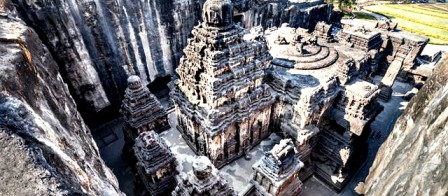Earth's interior - Geography study stuff & notes
It is reported that the radius of the Earth is 6,370 km. Therefore, the part of the Earth cannot be studied only by direct observations. But its properties are studied by drawing conclusions from the study of earthquake waves that propagate through internal rocks and other such indirect means.
The configuration of the Earth's surface is produced by exogenous and endogenic processes in the Earth. It is these endogenic processes that determine the internal configuration of the Earth.
Sources of the study of Earth's interior:
1. Direct sources –
• Drilling in deep ocean reveals humongous information through analysis of materials collected at different depth.
• Volcanic eruptions convey information through molten magma that originates from the interior of the Earth. But, it is difficult to determine the depth of origin of such magma.
• Surface rocks are readily available earth materials.
• Gold mines are dug to an average depth of 5 km, they are a good way to study the depth of the earth.
2. Indirect sources –
• Temperature and pressure during mining activity: With increasing temperature and depth, pressure also means an increase in density. Therefore it becomes possible to determine the rate of change of the characteristics of the material of the earth. This has led to the knowledge of the layers of the earth.
• Meteors: These are additional terrestrial masses that reach the Earth's surface. They have the same material and structure as the Earth and also give information about the materials from which the Earth is formed.
• Force of Gravity (G): The force exerted by the Earth on everything in its range is not the same with all latitudes, it is variable at different places. The observations suggest that the gravitational force is higher at the poles, and lower at the equator. This is due to increasing distance from the core. This difference in (g) is also responsible for the uneven material mass distribution.
• Magnetic Survey: The distribution of magnetic materials gives an idea of the Earth's magnetic field indicating the density type material present in the interior of the Earth.
• Seismic activity: This gives the most important evidence of the Earth's interior. Earthquakes give a good idea of the interior of the Earth.
Earth structure
1. The Crust:
It is the outermost solid and delicate part of the earth.
• oceanic crust is thin -thickness - 5 km. It is made of heavy rocks like basalt. The average density of the material is 3 g / cm3..
• Continental crust is thicker - thickness - 30 km. The average density of the material is 3 g / cm3.
• The upper crust is known as SIAL and the lower crust is known as SIMA.
The Himalayan crust is 70 km thick because continental crust is usually thicker in mountainous regions.
2. The Mantle:
The inner part of the crust is called mantle. It extends 2,900 km from the contact with Moo. The upper part of the mantle is called the asthenosphere. "Asthen" means weak. It spread 400 km and is the main source of magma.
The crust and upperpost of the lithosphere mantle is the solid part. Its thickness is 10–200 km. The lower mantle extends beyond the asthenosphere and remains in the solid state. It should be noted here that the mantle has a higher density than the crust.
3. The Core:
• The structure of this layer was understood by studying earthquake waves. The inner core is solid, but the outer side is solid.
• The density of the core from the mantle to the center is in the range of 5- 13 g / cm3.
• It is formed by very heavy materials, mainly nickel and iron. Therefore, it is also called the "Knife" layer.
Geological time scale
Geological time scale is a system of chronological measurement of time and has been commonly cited by Earth scientists to describe the time and relationship between events in Earth's history since its inception. This time scale uses some specific words that must be explained for a better understanding of the time scale.
• Eon> Era> Era> Epoch> Epoch is a descending order of time scale used to describe the history of geological time.
• The era currently running is Holocene, it is also known as the age of humans.










0 Comments